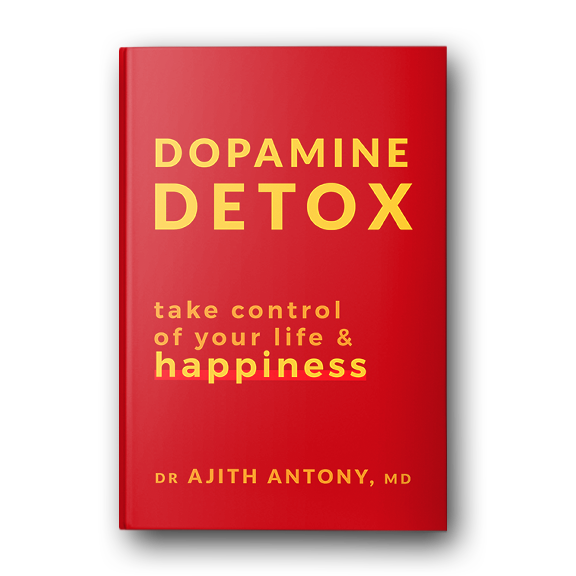Life is like a fabric woven with threads of optimism and pessimism. This delicate balance, akin to an internal stock market, can be dubbed the “Dopanomic” equilibrium. The term “Dopanomics,” a blend of dopamine (the neurotransmitter often associated with pleasure and reward) and economics, represents the underlying mechanisms governing the interplay between hopeful and cautious thinking. The nuanced dance between these factors influences every aspect of our lives, from individual thought processes to societal trends.
1. The Neurochemistry of Optimism and Pessimism
Dopamine: The Eager Investor
Dopamine has often been referred to as the “feel-good” neurotransmitter. It’s released during pleasurable situations, stimulating feelings of enjoyment and reinforcement. In the context of Dopanomics, dopamine is the currency of optimism, the bullish market trend that makes us invest in new experiences and ideas. It’s the cheerleader in the biochemical crowd, urging us to try that new restaurant or take up that exciting hobby. It’s like your personal motivational speaker, always encouraging you to reach for more.
Serotonin: The Level-Headed Trader
Serotonin, another crucial neurotransmitter, is the calming and rational influence in this biochemical market. If dopamine is the optimistic entrepreneur, serotonin is the wise, experienced trader, balancing risk and reward. It doesn’t necessarily contradict dopamine but tempers enthusiasm with calm and reason. Together, these neurotransmitters form a dynamic duo, guiding our actions and decisions like a well-balanced investment portfolio.
Cortisol: The Bear Market
Cortisol, the stress hormone, plays the part of the cautious pessimist. It’s a reminder of risk, a signal to be cautious, the bear market in our internal exchange. This hormone might seem like a downer, but it’s essential. It’s the voice of reason, reminding us to wear a helmet while riding a bike or to think twice before investing all our savings in that “can’t-miss” stock. Without cortisol, our internal market might crash due to unbridled optimism.
2. Psychological Perspectives
Optimism: Investing in the Future
Optimism encourages us to envision a brighter future and act on those beliefs. This positive outlook is like buying stocks in a promising new technology. The return might be huge, or it might fail, but the thrill of potential success drives us forward. Optimism is the sunny weather forecast in the often-cloudy climate of life, inviting us to plan picnics and outdoor adventures.
Pessimism: The Protective Hedge Fund
Pessimism isn’t necessarily the doom-and-gloom counterpart to optimism. It’s more like a protective mechanism, the financial hedge against potential losses. It’s the voice reminding us to pack an umbrella, just in case, or to diversify our investments. While it may seem negative, this cautious approach keeps us grounded and prevents the rain from ruining our parade.
3. Practical Implications
The Workplace
In a business setting, the Dopanomic balance plays out in decision-making, innovation, teamwork, and leadership. Optimism may drive new projects and inspire creativity, while pessimism ensures risk assessment and strategic planning. It’s the ideal team where enthusiasm meets prudence, where dreams meet reality, resulting in a productive, innovative, and resilient workforce.
Personal Relationships
In personal relationships, the interplay of optimism and pessimism creates a nuanced dialogue. While optimism fosters connection and trust, a touch of pessimism keeps expectations realistic, nurturing a grounded relationship. It’s the classic romantic tale where the dreamer meets the realist, and together they find the perfect balance. The relationship flourishes, not in spite of these differences but because of them.
Public Policy and Social Movements
Even on a societal level, Dopanomics of optimism and pessimism plays a pivotal role. Social movements often need a surge of optimism to start, while policy-making requires the balanced consideration and critical evaluation that pessimism provides. It’s a grand dance between visionaries and pragmatists, each contributing their unique perspective to shape society’s path.
Conclusion
The Dopanomic balance of optimism and pessimism is a profound understanding of how our brains navigate the complex world around us. It’s the yin and yang of hope and caution, where neither is inherently superior. Recognizing and harnessing this equilibrium allows us to approach life with both enthusiasm and wisdom.
In the stock market of life, it’s not about betting everything on a single outcome but diversifying and finding the right balance between potential reward and prudent restraint. Life, much like the financial markets, requires savvy navigation and the Dopanomic model offers a valuable framework for that journey.
So, as we invest in the portfolios of our lives, let’s remember to diversify, balance, and embrace both the ups and downs. After all, even in economics, variety is the spice of life.

Comments
2 responses to “The Dopanomic Balance of Optimism and Pessimism”
[…] Remember, optimism is like seasoning in a dish—a sprinkle enhances the flavor, but pour in the entire bottle, and you might just find yourself with a culinary catastrophe. Balancing optimism with a healthy dose of pessimism is the key. […]
[…] A balanced approach that combines optimism with a dose of realism can lead to more sustainable success. It’s like having your positive cake and eating it with a discerning fork. Read more about it in this post. […]